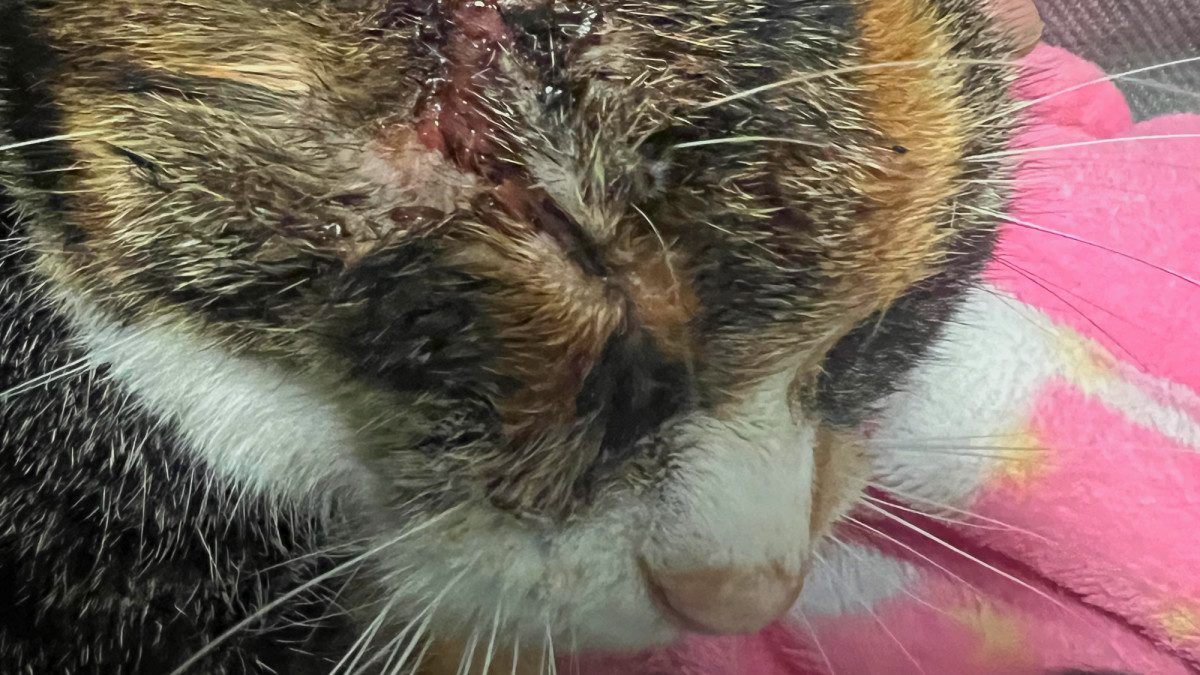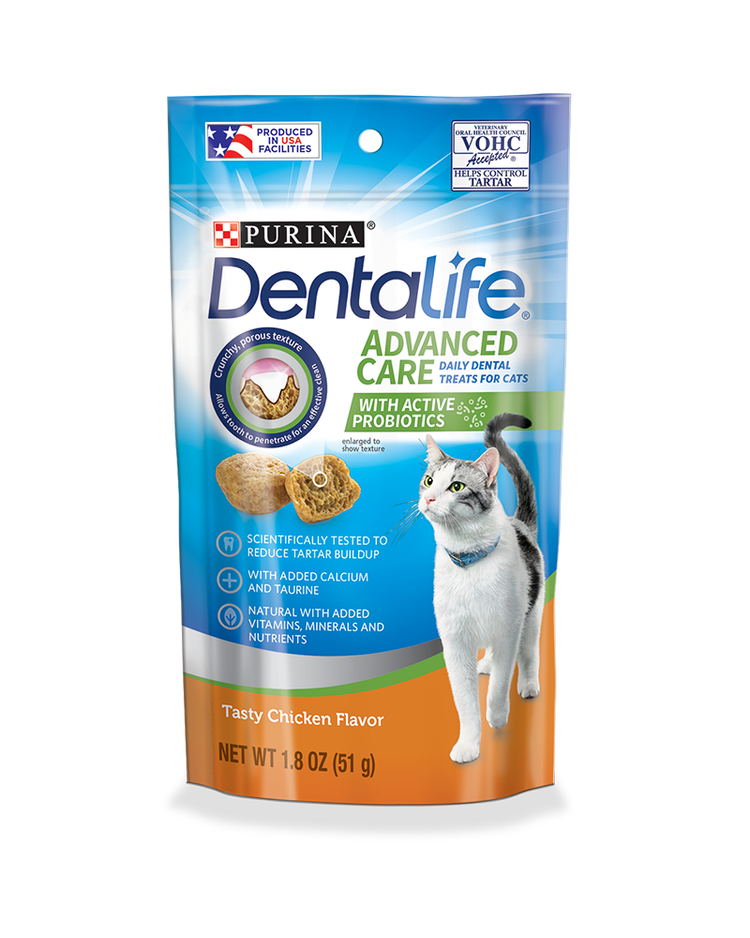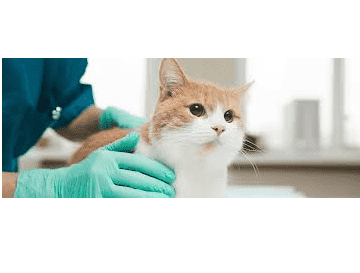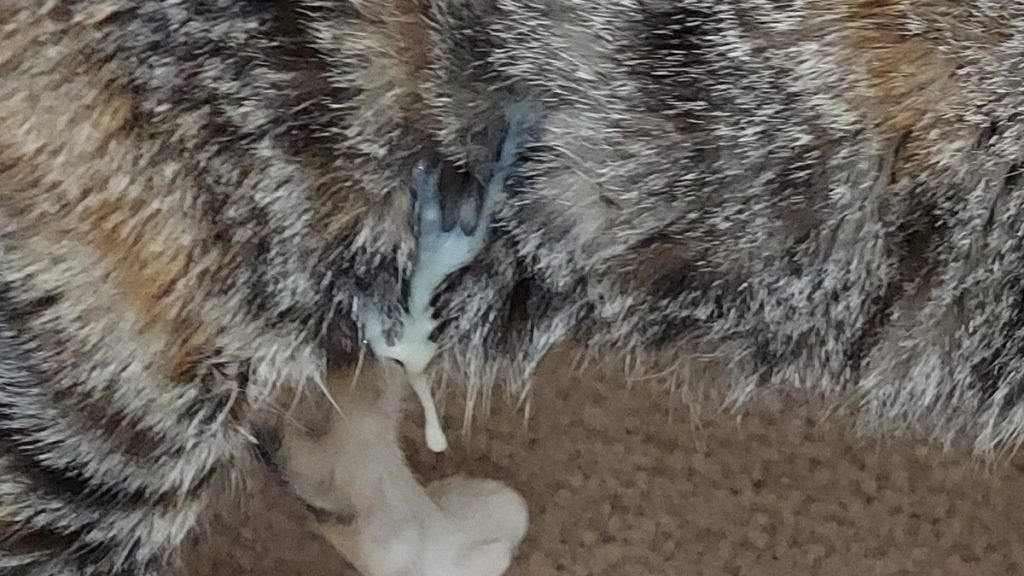If your cat is suddenly acting uncomfortable or you notice a swollen, painful lump on their skin, it could be an abscess. Knowing how to treat an abscess on a cat at home can save your furry friend from a lot of pain and prevent the problem from getting worse.
You’ll discover simple, safe steps you can take right now to help your cat heal quickly and comfortably. Keep reading to find out exactly what you need to do to protect your cat’s health and bring them back to their happy, playful self.

Credit: pethelpful.com
Recognizing Cat Abscess Symptoms
Recognizing an abscess on your cat early is very important. Abscesses are pockets of infection that form under the skin. They can cause pain and swelling. Spotting symptoms quickly helps you care for your cat properly. Knowing what to look for can prevent more serious problems.
Common Signs To Watch For
- Swelling or lumps on the skin, often warm to touch
- Redness or inflammation around the lump
- Discharge of pus or fluid from the wound
- Foul smell coming from the affected area
- Excessive licking or biting at a specific spot
- Changes in behavior, such as hiding or irritability
- Loss of appetite or reduced activity
- Fever or general signs of illness
When To Seek Veterinary Help
Seek professional care if the abscess looks very large or painful. If your cat stops eating or drinking, call your vet. Rapid swelling or spreading redness means urgent help is needed. If pus keeps coming out or the wound does not heal, see a vet. Always ask for advice if you are unsure about your cat’s condition.

Credit: www.purina.com
Preparing For Home Treatment
Preparing for home treatment of a cat’s abscess is crucial for success. Careful preparation helps make the process smoother and less stressful. It also protects both you and your cat from harm. Gathering the right supplies and creating a calm space sets the stage for effective care.
Gathering Necessary Supplies
Collect all needed items before starting treatment. This prevents interruptions and keeps the process quick.
- Sterile gauze pads
- Warm water or saline solution
- Antiseptic solution safe for cats
- Clean towels
- Disposable gloves
- Antibiotic ointment recommended by a vet
- Soft cloth or cotton balls
- Plastic bag for waste
Having these supplies ready allows you to act confidently and calmly.
Ensuring A Calm Environment
Choose a quiet room with minimal noise and distractions. Soft lighting helps your cat feel safe. Keep other pets away to avoid stress.
Speak gently and move slowly to avoid startling your cat. Use a towel to gently wrap your cat if needed. This keeps your cat still and prevents scratches.
Comfort and patience are key to successful home treatment. A calm setting helps your cat relax and cooperate during care.
Cleaning The Abscess Safely
Cleaning a cat’s abscess safely is crucial to prevent further infection and help your furry friend heal faster. It requires a gentle touch and the right materials to avoid causing pain or damage. You might feel nervous about handling the wound yourself, but with careful steps, you can provide effective care at home.
How To Gently Clean The Area
Start by calming your cat in a quiet space. Use a soft cloth or sterile gauze dampened with warm water to wipe around the abscess gently. Avoid scrubbing or applying pressure, as this can hurt your cat and worsen the wound.
Hold your cat securely but gently to prevent sudden movements. If your cat resists, consider enlisting help from someone you trust. Cleaning in short, calm sessions helps reduce stress for both you and your cat.
Using Antiseptics Correctly
Choose an antiseptic safe for cats, such as diluted chlorhexidine or iodine solution. Never use hydrogen peroxide or alcohol, as these can irritate the skin and delay healing. Dilute antiseptics according to package instructions—usually a 1:10 ratio with water.
Apply the antiseptic with a clean cotton ball or gauze, dabbing gently around the abscess. Allow it to dry naturally without rinsing it off. Regular antiseptic cleaning, twice a day, keeps bacteria at bay and promotes faster recovery.
Promoting Healing And Comfort
Helping your cat heal comfortably from an abscess is key to a quick recovery. You can take simple steps at home that ease your cat’s pain and support the healing process. Paying close attention to your cat’s needs during this time can make a big difference.
Applying Warm Compresses
Warm compresses help increase blood flow to the affected area, which speeds up healing. Use a clean cloth soaked in warm water—make sure it’s not too hot to avoid burning your cat’s sensitive skin.
Hold the compress gently on the abscess for about 5 to 10 minutes. Repeat this 3 to 4 times a day to encourage drainage and reduce swelling. If your cat resists, try to soothe them with calm words and gentle petting to keep stress levels low.
Managing Pain And Inflammation
Comfort is crucial when your cat has an abscess. Over-the-counter human painkillers are dangerous for cats, so never give your pet any medication without veterinary guidance.
Instead, talk to your vet about safe pain relief options designed specifically for cats. You can also create a quiet, cozy space for your cat to rest and avoid activities that might irritate the injury.
Have you noticed how your cat reacts to touch around the abscess? Observing their behavior can help you adjust your care to keep them as comfortable as possible.
Preventing Future Abscesses
Preventing future abscesses is key to keeping your cat healthy and happy. Abscesses often form from wounds that get infected. Avoiding injuries and infections helps reduce these painful problems. A clean and safe environment supports your cat’s well-being. Grooming also plays a big role in spotting issues early and preventing infections.
Regular Grooming Tips
Groom your cat regularly to keep its skin and fur clean. Brush your cat’s coat to remove dirt and loose hair. Check for scratches, bites, or swelling during grooming. Clean your cat’s ears and eyes gently to avoid infections. Trim your cat’s nails carefully to prevent accidental wounds. Bathing is rarely needed but can help if your cat gets very dirty. Use pet-safe products only.
Keeping Your Cat’s Environment Safe
Keep your cat indoors or supervise outdoor time to reduce fights and injuries. Remove sharp objects and hazardous materials from your cat’s space. Provide clean bedding and fresh water daily. Keep litter boxes clean to prevent bacteria buildup. Separate your cat from aggressive animals to avoid bites and scratches. Regular vet checkups help catch health issues early. A safe environment lowers the chance of abscess formation.
When Home Care Isn’t Enough
Sometimes, home care is not enough to heal a cat’s abscess. Abscesses can worsen quickly. Ignoring signs of trouble can put your cat’s health at risk. Knowing when to seek professional help is very important. Prompt action can prevent serious problems.
Signs Of Complications
- Abscess grows larger or becomes very painful
- Cat shows signs of fever or chills
- Wound discharges thick, yellow, or foul-smelling pus
- Cat stops eating or drinking
- Cat becomes very weak or lethargic
- Swelling spreads beyond the original abscess site
- Abscess bursts but does not heal after a few days
Veterinary Treatment Options
Veterinarians can properly clean and drain the abscess. They may prescribe antibiotics to fight infection. Pain relief medication helps your cat feel better. Sometimes, surgical removal of dead tissue is needed. Your vet will also check for deeper infections. Follow-up visits ensure the wound heals well. Professional care reduces risks of serious complications.

Credit: urbananimalveterinary.com
Frequently Asked Questions
What Are The First Signs Of A Cat Abscess?
Early signs include swelling, redness, pain, and warmth at the site. Your cat may also lick or bite the area frequently.
How Can I Safely Clean A Cat Abscess At Home?
Use a warm, damp cloth to gently clean the abscess twice daily. Avoid squeezing or popping it to prevent infection spread.
When Should I See A Vet For My Cat’s Abscess?
Visit a vet if the abscess worsens, drains pus, or your cat shows lethargy, fever, or loss of appetite. Prompt treatment is crucial.
Can I Use Antibiotics To Treat A Cat Abscess Myself?
Never give antibiotics without vet guidance. Incorrect use can worsen infection or cause resistance. Always consult your vet for proper medication.
Conclusion
Caring for a cat’s abscess at home is manageable. Keep the area clean and watch for signs of infection. Use warm compresses to soothe your cat. Ensure your cat stays comfortable and calm. Monitor their behavior for any changes. Consult a vet if the abscess worsens or doesn’t heal.
Proper care can prevent future issues. Your attention makes a big difference. Always prioritize your cat’s health and well-being. Providing the right care helps them recover faster. Your cat will appreciate the love and attention. Stay observant and proactive in your approach.

